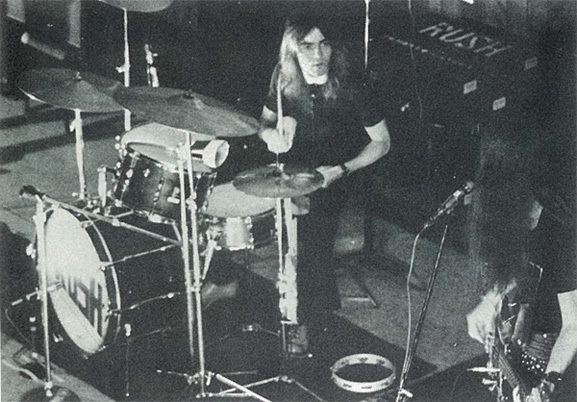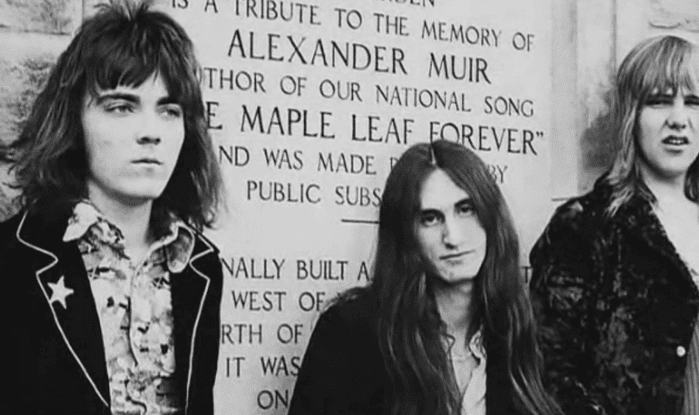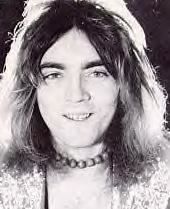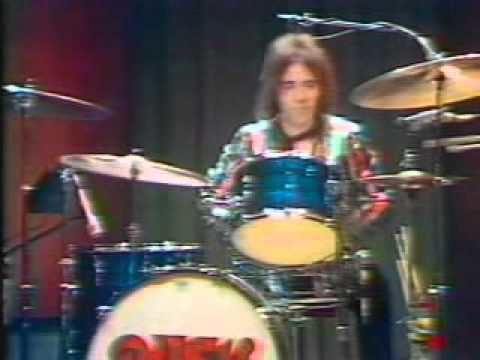Birth name John Howard Rutsey Occupation(s) Musician Albums Rush | Instruments Drums, percussion Name John Rutsey Years active 1963–1974 Role Drummer | |
 | ||
Born July 23, 1952 ( 1952-07-23 ) Similar People | ||
John rutsey
John Howard Rutsey (July 23, 1952 – May 11, 2008) was a Canadian drummer, most recognized for being a co-founding member of Rush along with Alex Lifeson and Geddy Lee, and performing on the band's debut album. John Rutsey left the band in 1974, due to musical differences and health problems with type 1 diabetes, and was replaced by Neil Peart. Rutsey's type 1 diabetes was believed to be a complicating factor in his death from a heart attack in 2008. Tape-recorded comments from Rutsey are heard in the 2010 documentary Rush: Beyond the Lighted Stage, and the DVD release includes two performances with him on drums.
Contents
- John rutsey
- Rush working man early 1974 john rutsey on drums
- Personal life
- Formation of Rush
- Career
- Later life
- Death
- Aftermath
- References

Rush working man early 1974 john rutsey on drums
Personal life

Rutsey had two brothers, an older one, Bill, and baseball writer Mike. His father, Howard Rutsey, was a crime reporter for the Toronto Telegram and died of a heart attack. John lived at home with his mother, Eva, and was a student at St. Paschals School. Unlike Geddy Lee and Alex Lifeson, who were more into bands such as Pink Floyd and Genesis, Rutsey was more into bands like Bad Company.
Formation of Rush

In 1963, Rutsey met Lifeson, while attending St. Paschals School. Rutsey would play hockey with him on the street. Both interested in music, they decided to form a band. The two would be part of the band 'The Projection' with Bill Fitzgerald and "Doc" Cooper.
Ian Grandy stated; "John was the guy who would bug everyone to practice, and I think thought of himself as a "rock and roller". I've said it before and I'll say it again: There would have been no 'Rush' without John... Anyway, John led the guys as far as being 'glam rockers', with really flashy jackets and pants, and eight-inch high boots. One time, he was speaking to me at the Gasworks and I said, 'Didn’t we used to be the same height (5’8”)?' He laughed and said 'Well, maybe a long time ago!'"

The band's name "Rush" was suggested by Rutsey's brother, Bill, during a band meeting in Rutsey's basement.
Career

Soon after the band formed, Jeff Jones left and was succeeded by current bassist and vocalist Geddy Lee. During these early years, Rutsey played on the "Not Fade Away"/"You Can't Fight It" single as well as the debut album.
Lee and Lifeson have each acknowledged that during the writing and recording sessions for the band's debut album, Rutsey was given the role of chief lyricist. When the time came to start recording, however, he did not deliver any lyrics. In interviews, Lee and Lifeson have both said that Rutsey was dissatisfied with what he had written and had torn up the lyric sheets. Lee hastily wrote the lyrics to all the songs before recording the vocal tracks.
Soon after Rush released its debut album, Rutsey left the band, due to musical differences and health concerns related to diabetes. His drinking may have posed potential problems with extended tours. Rutsey's final performance with the group was on July 25, 1974 at Centennial Hall in London, Ontario. He was replaced by Neil Peart.
Later life
Lifeson stated in a 1989 interview that he still often had seen him, and after leaving the band he went into bodybuilding. Lifeson remarked "He competed on an amateur level for a while, doing that for a few years, and has sort of been in and out of that, but he still works out, and I work out with him a few times a week at a local gym – at a Gold's, here in Toronto." In 2005 Lifeson said that he had not seen Rutsey since around 1990.
Death
On May 11, 2008, Rutsey died in his sleep of an apparent heart attack, related to complications from diabetes. Rutsey's family wished to keep the funeral a private affair, although donations would be sent to the Juvenile Diabetes Research Foundation in Markham, Ontario.
Aftermath
After Rutsey's death, Lee and Lifeson released this statement: "Our memories of the early years of Rush when John was in the band are very fond to us. Those years spent in our teens dreaming of one day doing what we continue to do decades later are special. Although our paths diverged many years ago, we smile today, thinking back on those exciting times and remembering John's wonderful sense of humour and impeccable timing. He will be deeply missed by all he touched."
Rutsey's part in the band's early history is acknowledged in the 2010 documentary Rush: Beyond the Lighted Stage. Tape-recorded comments from him are heard during the film, and the DVD release includes two performances with him on drums in its bonus features.
Rutsey is buried in the Mount Pleasant Cemetery in Toronto, Ontario, Canada.
